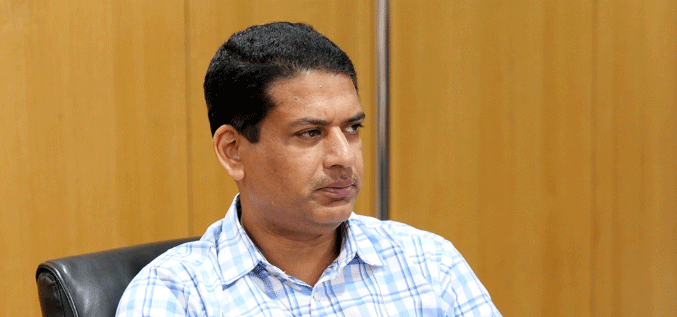New Delhi: In a significant move to bolster India’s clean energy ambitions, Secretary of the Ministry of New and Renewable Energy (MNRE), Shri Santosh Sarangi, recently convened a high-level meeting at Atal Akshay Urja Bhawan to review the country’s renewable energy (RE) transmission infrastructure.
This review, chaired by Shri Sarangi was a key part of India’s strategy to meet its ambitious climate goals, focused on expediting project connectivity, establishing new pooling stations, identifying new sites for development, and improving coordination with states.
This initiative is critical as transmission is the backbone of India’s renewable energy growth. As of June 2025, India’s installed non-fossil fuel capacity has surpassed 50% of its total power capacity, a major milestone driven by rapid growth in solar and wind power. However, this transition is not without its challenges. The review aimed to address key hurdles that could impede the nation’s clean energy roadmap.
The meeting with stakeholders, including developers and state representatives, addressed several pressing issues:
Connectivity Delays: A major focus was on the delays in getting new RE projects connected to the grid. Projects worth ₹65,000 crore in Rajasthan, a major renewable hub, are currently stranded due to delays in transmission approvals, a problem that is being exacerbated by regulatory and environmental challenges, such as those related to the Great Indian Bustard (GIB) habitat.
Grid Infrastructure Development: To accommodate the influx of RE, the government is focusing on building a “future-ready grid.” This includes the establishment of new inter-state transmission system (ISTS) lines and pooling stations, which are essential for evacuating power from large-scale solar and wind parks. The government is also exploring innovative solutions like hybrid projects and battery energy storage systems (BESS) to ensure a stable and reliable power supply.
State Coordination: The meeting underscored the importance of better coordination between the central government and states. This is crucial for streamlining the approval process for transmission lines and addressing specific, localized challenges that vary from state to state. For example, some states have their own grid development plans, such as Gujarat’s Green Energy Corridor (GEC) project, and central coordination is key to ensuring these plans align with national targets.
Regulatory and Policy Clarity: The review also addressed the need for greater clarity on policies and regulations. Developers have voiced concerns over delays in Power Purchase Agreements (PPAs) and the need for case-by-case waivers for ISTS charges. Stable and transparent policies are essential to restore and maintain investor confidence in the sector.
The government’s focus on transmission is a direct response to the primary challenge of integrating intermittent renewable energy sources into the national grid. Without a robust transmission network, even the largest renewable projects cannot deliver power to where it’s needed. The outcomes of this review are expected to lead to a more proactive and systematic approach to addressing these bottlenecks through regular periodic reviews.
By prioritizing grid development, promoting coordination, and addressing regulatory hurdles, India aims to accelerate its clean energy transition and achieve its goal of 500 GW of non-fossil fuel capacity by 2030. The emphasis on a future-ready grid is not just about building new lines; it’s about creating a smarter, more resilient network that can reliably power the nation’s economic growth while mitigating climate change.


